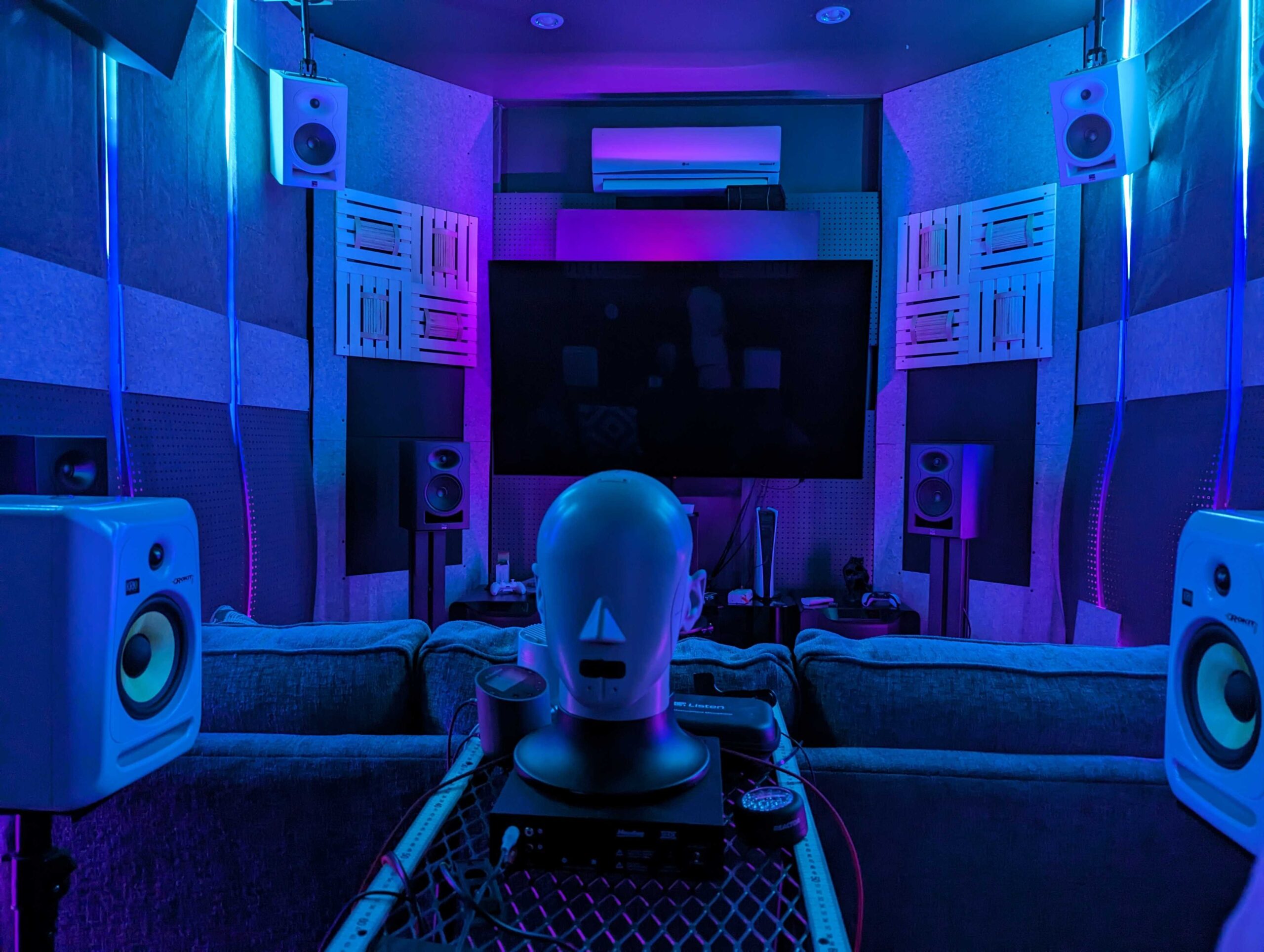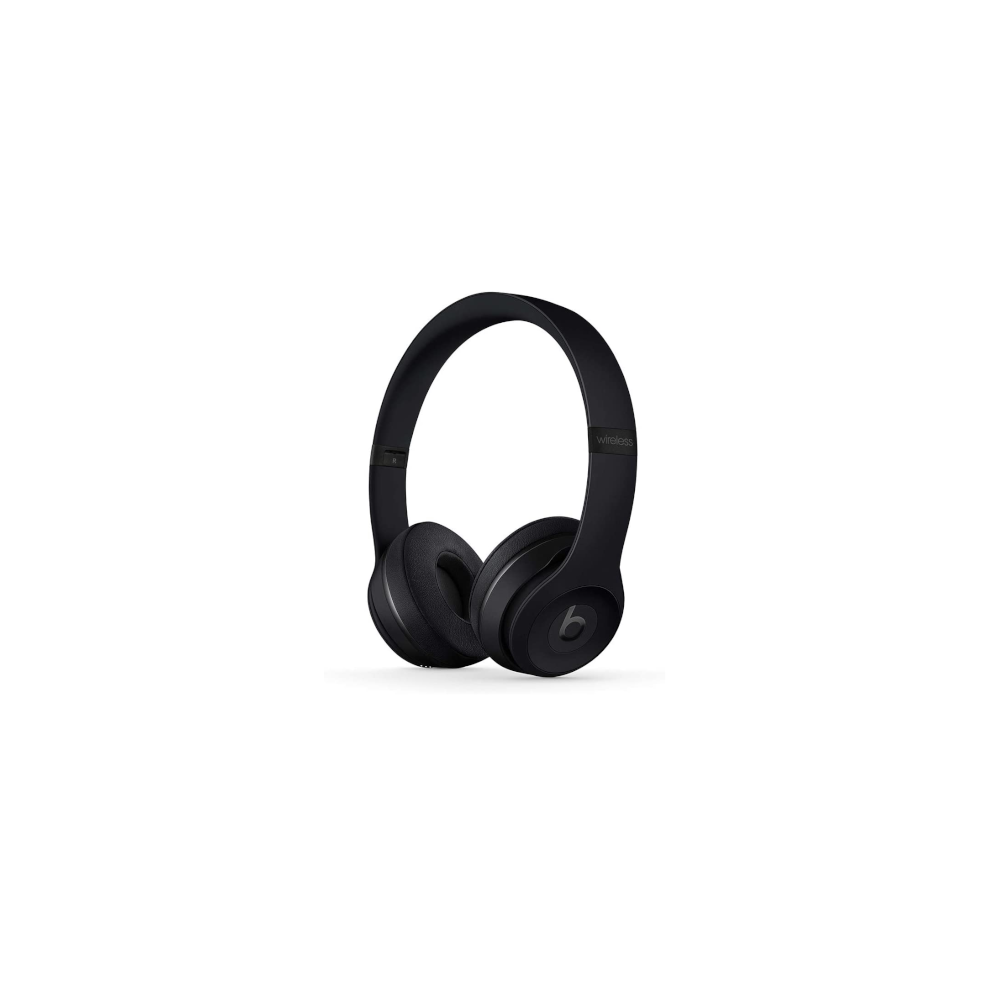All products featured are independently chosen by us. However, SoundGuys may receive a commission on orders placed through its retail links. See our ethics statement.
Best On-Ear Headphones
From all the pairs we’ve tested, these are the on-ear headphones that truly stood out.
October 1, 2025
Adam is an Editor at SoundGuys specializing in gaming headsets, flagship headphones, and earbuds. A lifelong fan of video games and cinema, he brings a sharp ear and passion for immersive sound to every review. Beyond hardware, Adam writes thought-provoking features and opinion pieces that explore how audio tech shapes our lives. Armed with a BA in Cognitive Science, he pairs technical insight with a love for music’s psychological uplift. At home, he still rocks his original Sennheiser MOMENTUM over-ears, switches to Bose QuietComfort Ultra on flights, and relies on Galaxy Buds2 Pro while out and about.
With so many headphone styles out there, choosing the right pair can feel overwhelming. Earbuds are great for portability, while over-ear models excel at comfort and immersion. But if you’re looking for a Goldilocks middle ground, on-ear headphones strike the perfect balance — lighter than over-ears yet more powerful than earbuds. And while some high-end models can get pricey, you don’t have to break the bank. After extensive testing, we’ve rounded up the best on-ear headphones available right now.
Compare table
Filter
- Compare tableProductVotes
- 4 total votes4 total votes
$130
8.1
6.1
7.3
7.5
8.4
7.0
7.5
8.5
9.9
9.0
8.3
- 0 total votes0 total votes
$79
6.8
4.7
7.0
5.0
8.5
6.0
5.0
7.0
9.8
7.0
7.0
- 2 total votes2 total votes
$129
6.8
3.0
0.0
6.9
6.2
7.0
7.5
7.7
9.8
7.0
7.5
- 0 total votes0 total votes
$199
6.8
6.6
0.0
6.6
4.2
5.0
9.0
7.0
10.0
7.6
8.2
- 1 total votes1 total votes
$150
6.7
0.0
0.0
6.5
6.0
8.0
7.5
7.0
9.9
8.0
7.5
- 0 total votes0 total votes
$59
6.5
3.0
0.0
6.9
7.7
6.3
5.0
7.4
9.9
6.0
7.4
- 0 total votes0 total votes
$38
6.4
3.7
0.0
6.0
7.5
5.5
5.0
7.0
9.9
8.0
7.2
- 0 total votes0 total votes
$99
6.4
3.0
0.0
6.0
7.0
6.0
5.0
7.0
10.0
8.0
7.0
- 0 total votes0 total votes
$89
6.4
5.5
0.0
7.3
7.5
7.0
5.0
7.7
9.2
7.0
3.8
- 0 total votes0 total votes
$49
6.3
1.8
0.0
8.6
8.4
8.3
7.5
8.1
8.2
0.0
7.0
- 0 total votes0 total votes
$0
6.2
0.0
0.0
7.8
7.5
7.8
7.5
8.2
8.6
0.0
8.2
- 0 total votes0 total votes
$86
5.9
0.0
0.0
7.6
7.7
8.1
4.0
8.7
8.5
0.0
8.8
Product chart
In the chart above, you can see how each of the headphones compares in terms of price and performance.
To gather information about how well each of the earbuds and headphones work, we subject each product to a number of objective tests. We use a Bruel & Kjaer 5128 acoustic measurement system to test headphones and earbuds in our SoundGuys lab. The ear canal of the artificial head was created by averaging and smoothing 3D models of individual ear canal features from the MRI scans of 40 different people.

We perform the following testing to determine the best headphones and best earbuds:
- We run sequences to determine the best fit of the headphones, and if there are any manufacturing issues with the product.
- We measure the headphones’ performance and compare the frequency response to our industry-validated SoundGuys Headphone Preference Curve to give context to readers.
- To rate sound quality, we use the Multi-Dimensional Audio Quality Scores (MDAQS) algorithm from HEAD acoustics. These are virtual mean opinion scores as calculated by a powerful machine learning model based on the input of real listeners.
- We play several samples of shaped noise over loudspeakers to test noise canceling and record with our artificial head. We take samples with ANC on, ANC off, and with the headphones off the head. After subtracting the appropriate curves from each other, we can see how well the headphones block out noise.
- To evaluate microphone quality, we play pre-recorded spoken Harvard sentences from a calibrated artificial mouth in our test chamber, either with or without simulated background noises, simulated reverberant spaces, or artificial wind.
- To measure battery life, we play back music through the headphones or earbuds peaking at 75dB(SPL), a safe and realistic listening level.
In addition to objective testing, our team of audio experts uses each of the headphones and earbuds to evaluate the experience of using the product. By wearing the headphones in day-to-day use, we evaluate the comfort, noting any pain points. We also make sure to try out each of the features that the headphones have to offer, such as using the equalizer in the companion app.
Using a combination of subjective and objective testing, we score each product. To learn more about how we evaluate headphones and earbuds, check out our in-depth explainer on how we test.

Here at SoundGuys, we’ve been testing audio products for over a decade. Our team comprises audio product experts who have tested hundreds of different headphones, earbuds, and speakers. Moreover, our team comes from diverse backgrounds and a wealth of expertise, including audio engineering, film production, journalism, podcasting, music production, and even touring musicians.
Everything we recommend results from our objective measurements and great subjective experiences. Ultimately, we want you to enjoy your purchase or, at the very least, leave our site with a little more knowledge about the inner workings of audio. To see why you can trust us with your purchase decision, make sure to check out our ethics policy.
Poll
What matters most in on-ear headphones?
Best overall pick: JBL Live 670NC

JBL Live 670NC earn their spot as our best overall on-ear pick by combining strong adaptive active noise canceling, long battery life, and a flexible feature set. Their “True-adaptive Noise Canceling” reaches nearly 30dB of attenuation around 250Hz to suppress engine rumbles and street noise, while passive isolation helps at higher frequencies. The headphones pair over Bluetooth 5.3, include a companion app with a graphic EQ and spatial sound toggle, and exceeded JBL’s battery claim in our test with 54 hours and 57 minutes of playback with ANC engaged. Our MDAQS ratings back up the Live 670NC’s sound performance (a 4.8 on our multi-dimensional scale), and their compact, foldable on-ear design makes them very portable and comfortable for many listeners. In addition to being our top pick overall, they also earned recognition for Best ANC, Best Sound Quality, Best for Comfort, and a feature nod for Bluetooth 5.0 and more.
Sourced from JBL Live 670NC review – SoundGuys.
Best Value pick: JBL Tune 660NC Wireless Headphones

JBL Tune 660NC deliver the best value among these on-ear options by packing usable ANC, long battery life, and portability into an inexpensive package. In our testing they lasted 37 hours and 9 minutes with ANC on (JBL advertises up to 44 hours), and the ANC provides roughly a 10dB reduction to low-mid frequency noise—helpful for commuters and flyers. The Tune 660NC supports multipoint Bluetooth and includes a 3.5mm cable for wired listening, though it lacks a companion app for EQ adjustments. They also stood out for call clarity, so while we lead with value as the headline, they additionally earned recognition for Best Call Quality.
Sourced from JBL Tune 660NC review – SoundGuys.
Best for iPhone users pick: Beats Solo3 Wireless

Beats Solo3 Wireless are our pick for iPhone users thanks to Apple integration and codec support that smooths the experience on iOS devices. The W1 chip enables very quick pairing and broad recognition across iCloud devices, and AAC support keeps streaming quality reliable on iPhones, iPads, and MacBooks. Battery life is strong in real use—our test returned about 45 hours—and Fast Fuel charging gives roughly three hours of play from a five-minute charge. These on-ear headphones prioritize style and convenience over modern features: they have no ANC and rely on a clamping on-ear fit that some users may find uncomfortable for long sessions. That combination of iPhone-first pairing and long endurance is what makes the Solo3 stand out for Apple-centric listeners.
Sourced from Beats Solo3 Wireless review: Worth it in 2024? – SoundGuys.
Best Battery Life pick: Beats Solo 4

Beats Solo 4 claim the title for battery life among these on-ear headphones, surviving our test for an impressive 84 hours and 18 minutes. They offer versatile listening with Bluetooth 5.3 and both USB-C and 3.5mm wired options, so you can keep listening even when the battery runs low. The Solo 4’s design is simple and foldable for travel, but the on-ear form factor can concentrate weight on the ears and become fatiguing after extended use. These headphones don’t include ANC, so their strong battery performance is best paired with quieter environments or casual listening. If you need the longest-lasting on-ear pair here, the Solo 4 is the clear choice.
Sourced from Beats Solo 4 review – SoundGuys.
Best for Android users pick: Marshall Major V

Marshall Major V are our pick for Android users because they support Bluetooth 5.3 and SBC, AAC, and LC3 codecs, giving broader codec flexibility for non-iOS devices. The Major V also offer exceptional battery endurance—92 hours and 52 minutes in our test—and convenient multipoint pairing plus wireless charging on compatible pads. A downloadable Marshall app unlocks a customizable 5-band EQ and lets you remap the one-touch M-button, which is useful for Android listeners who want to tweak sound and controls. These are not noise-canceling headphones, however, and their on-ear fit can shift with movement, so they’re best for stationary or casual listening where long battery life and Android-friendly features matter most.
Sourced from Marshall Major V review – SoundGuys.
Our verdict
Across this group of on-ear headphones, the JBL Live 670NC stands out as the most complete package for commuters and travelers who want effective ANC, a roomy sound with a high MDAQS rating, and a comfortable, portable on-ear design. The JBL Tune 660NC gives you the best value tradeoff with usable ANC and solid call quality, while the Beats Solo3 will appeal to iPhone owners who value fast pairing and seamless iCloud integration. If battery life is your top priority, the Beats Solo 4 delivers far longer runtimes than the others, and the Marshall Major V is the best pick for Android users who want wide codec support, app EQ, and extremely long battery life.
The Sony WH-CH510 and WH-CH520 didn’t make a dedicated pick here but still serve specific needs: the WH-CH510 is an ultra-budget option with very long battery life (about 46 hours) but an unpredictable sidetone implementation that can be distracting, while the WH-CH520 is a comfortable, reliable basic on-ear with around 55 hours of playback, Fast Pair and multipoint support, and no ANC—better if you need to hear your surroundings.
FAQ
Consumers and manufacturers alike have realized that isolation is a greater challenge with on-ear headphones, and they sometimes clamp too tightly. Even so, you can’t deny that on-ears are portable compared to over-ear headphones.
On-ear headphones offer a balanced compromise between sound quality and portability. While they don’t provide the same level of immersion as over-ear models, they deliver respectable audio performances suitable for most music genres.
Comfort is subjective and depends on individual preference. Over-ear headphones usually provide a more comfortable fit for extended periods, thanks to their cushioned ear cups that enclose the ears. On-ear models can be lighter but may apply pressure directly to the ears, which some people find uncomfortable over time.
Unlike over-ears, on-ear headphones sit directly on top of your ears. They do not often create a seal to your head as well as over-ears can. That looser fit can make them feel lighter and more breathable, which some people find more comfortable for short or casual listening sessions. However, it also means they usually block out less outside noise and may leak sound more easily, especially at higher volumes.
The on-ear design is great for listeners who want many of the benefits of over-ear headphones, without all the added heft. These aren’t quite pocketable as in-ears, but they often include rotating or collapsible hinges for storage. Again, manufacturers can include large batteries into these headphones.
Isolation, the ability for a headset to block out background noise, is difficult with on-ear headphones. An innocent wiggle of the ear could set the whole fit off-kilter, and let in all of the environmental noise around you. This is bad, because good isolation yields optimal audio quality.
Sometimes on-ear headphones can provide very effective isolation at the expense of comfort. This is true for the Beats Solo Pro noise-canceling on-ear headphones, which feel like wearing a vice grip. Another disadvantage: even though they’re easier to carry than over-ear headphones, they’re still cumbersome relative to earbuds.
Not usually. On-ear headphones can slip during intense movement and don’t manage sweat as effectively as earbuds. For workouts, wireless earbuds or bone-conduction headphones are generally better choices.
Not as much as over-ear headphones. Some models include active noise cancelling (ANC), which electronically reduces outside noise, but passive isolation (physical blocking) is usually limited.
Yes, generally more than over-ear or in-ear headphones. Because they don’t create a full seal around your ear, people nearby may hear your music, especially at higher volumes. Closed-back designs leak less than open-back ones.
Not yet. While Bluetooth has become way better and more convenient in the last few years, it still can’t compete on a technical level with wired over-ear headphones. Sure, we might be a little biased against removing the headphone jack. Still, even our objective testing of the LDAC codec (which is arguably one of the top transfer methods currently available) revealed that Bluetooth falls short. Of course, you probably won’t have to worry about it too much if you’re over the age of 24 because our hearing tends to go a lot sooner than you might realize, but it’s still something you should be aware of. At least for now, wired headphones still reign supreme.
Over-ear headphones generally offer superior sound quality due to their larger drivers and better isolation, which minimizes ambient noise and allows for a more immersive listening experience.
Thank you for being part of our community. Read our Comment Policy before posting.